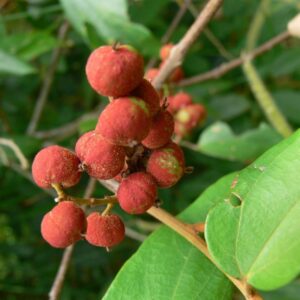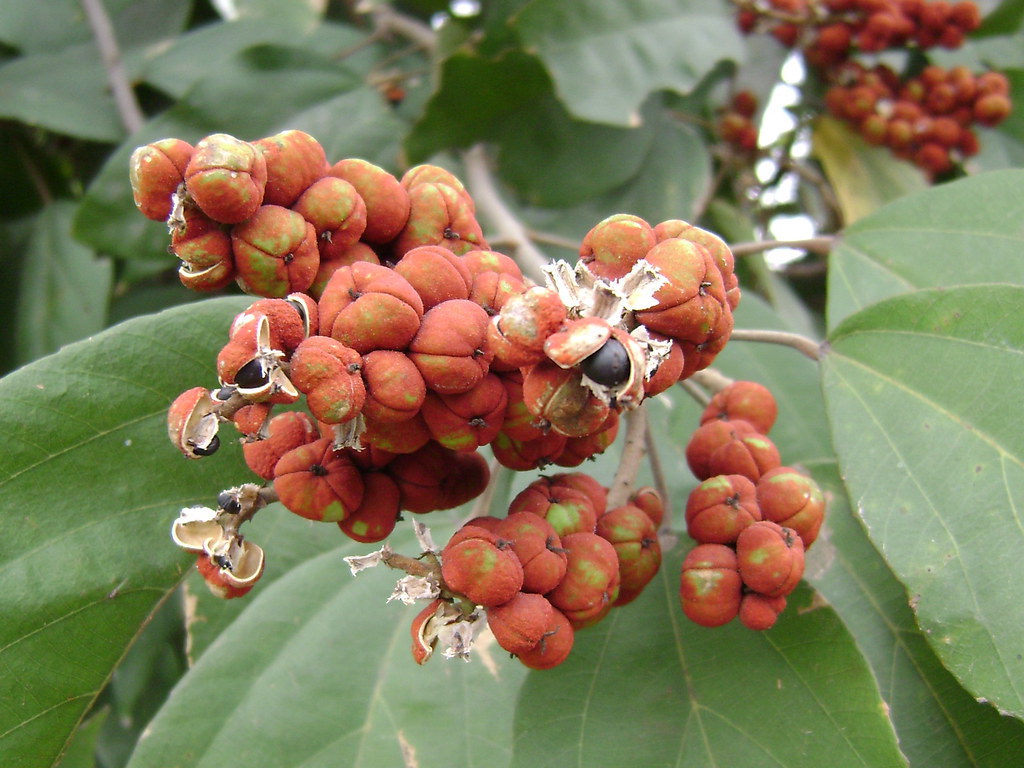Herb
Kampilla (Mallotus philippinensis) Herb Ayurvedic Overview
Ayurveda is a conventional Indian system of medicine that thoroughly focuses and appeals toward a healthy lifestyle in natural ways. Ayurveda aims to maintain the wellness and health of healthy human beings and manage Vyadhis through balancing the Dosha, Dhatu, and Moola of the body. Ayurveda also focuses on mental well-being as much as it considers physical well-being. Ayurveda consists of a vast collection of herbs that are known for their medicinal properties. We are going to discuss Kampilla as mentioned ahead.
Kampilla is an Ayurvedic herb known for its medicinal properties for generations. Although it is a medicinal herb, because of its mercurial properties (Rasasiddhi), it is taken under Sadharanarasa in Rasa-Shastra. Data regarding this herb is available in classical Ayurvedic textbooks and journals. Kampilla consists of glands and hairs of the fruit of Mallotus philippinensis Muell. Arg. (Fam. Euphorbiaceae).
It is a widespread perennial shrub or small tree found in the outer Himalayas ascending to 1500 m. Leaves of this herb are simple and alternate, more or less leathery, primarily acute at apex, cuneate to round with two glands at base. Mature fruits from this herb are collected from February till March; the reddish-brown powder can be collected in cloth by shaking and rubbing the fruits with hands.
This herb is beneficial for the management of skin diseases, intestinal worms, and wounds. In Ayurveda, Kampilla is indicated for UdaraRoga, GulmaRoga, Vibandha, Adhmana, Krumiroga, Kasaroga, Ama, Vrana, Jwara, Shopha and Shool. It has been stated to be helpful to minor ailments.
Table of Contents
Scientific Classification of Kampilla (Mallotus philippinensis):
- Kingdom: Plantae
- Subkingdom: Tracheobionta
- Superdivision: Spermatophyta
- Class: Magnoliopsida
- Subclass: Rosidae
- Order: Euphorbiales
- Family: Euphorbiaceae
- Genus: Mallotus
- Species: philippensis
Kampilla (Mallotus philippinensis) Synonyms:
- Sanskrit: Rajanaka, Kampillaka
- Assamese: Lochan
- Bengali: Kamlagudi
- English: Kamala
- Gujrati: Kapilo
- Hindi: Kabila
- Kannada: Kapila, Chandrahettu, Kapilathettu
- Kashmiri: Kameelak
- Malayalam: Kampippala, Kampipalu
- Marathi: Shendri, Kapila
- Oriya: Kamalagundi
- Punjabi: Kamila
- Tamil: Kamala, Kampila
- Telugu: Kampillamu
- Urdu: Kamila
Kampilla (Mallotus philippinensis) Description:

a) Macroscopic: The herb, when observed, is delicate, granular powder, dull-red or madder-red colored, and is floating on water. The fruits are globose, 3-lobed, 8-10 mm in diameter and is covered with bright red powder. The leaves of kampilla are ovate-lanceolate, 8-22 x 3-8 cm, 3-nerved at base, pubescent and with numerous red glands beneath.
b) Microscopic: Under microscopic observation on Kampilla glands appear depressed and globular, containing deep-red colored resin, excreted by many clubs shaped cell emitting from a common center, several stellate trichomes are present, which are thick-walled, branching lignified with smooth margins, yellow-colored, set out in small radiating groups.
Identity, Purity, and Strength of Kampilla (Mallotus philippinensis):
- Foreign matter Not more than 2 percent, Appendix 2.2.2.
- Total Ash Not more than 6 percent, Appendix 2.2.3.
- Acid-insoluble ash Not more than 4 percent, Appendix 2.2.4.
- Alcohol-soluble extractive Not less than 50 percent, Appendix 2.2.6.
- Water-soluble extractive Not less than 1.0 percent, Appendix 2.2.7.
Chemical Constituents of Kampilla (Mallotus philippinensis):
In this genus, the major phytochemicals present consist of different natural compounds. Resinous coloring matter (rottlerin), which is in brownish-red or reddish yellow color, is the most crucial active constituent of Kampilla. The stem bark of Kampilla contains kamaladiol-3-acetate and friedelin. Capsule hair and glands provide phloroglucinol derivatives; rottlerin, isorottlerin, isoallorottlerin and methylene-bis-methyl-phloroacetophenone. The two main compounds mentioned as kamalins one and two have been outlined.
Ayurvedic Properties and Action of Kampilla (Mallotus philippinensis):
- Rasa: Katu
- Guna: Laghu, Ruksa, Tiksna
- Virya: Ushna
- Vipaka: Katu
- Karma: Krmighna, Vranapaha, Virecana
Ayurvedic Formulations made by Kampilla (Mallotus philippinensis):
Kampilla can be found in these Ayurvedic formulations such as DhanvantaraGhrta, MisrakaSneha, KrimighatiniVati, JivantyadiYamaka, VidangadiCurna.
Therapeutic Uses of Kampilla (Mallotus philippinensis):
Kampilla is indicated in Adhmana, Gulma, Krmiroga, Vibandha, Vrana, Kasa, Shopha, Shoola, Jwara, Khalitya, Raktapitta, Raktavikara, Kushtha, Pama, Prameha, Ashmari and AmaDosha.
Dose of Kampilla (Mallotus philippinensis):
0.5-1.0 g of the drug in powder.
Reference:
Ayurvedic Pharmacopeia of India.


